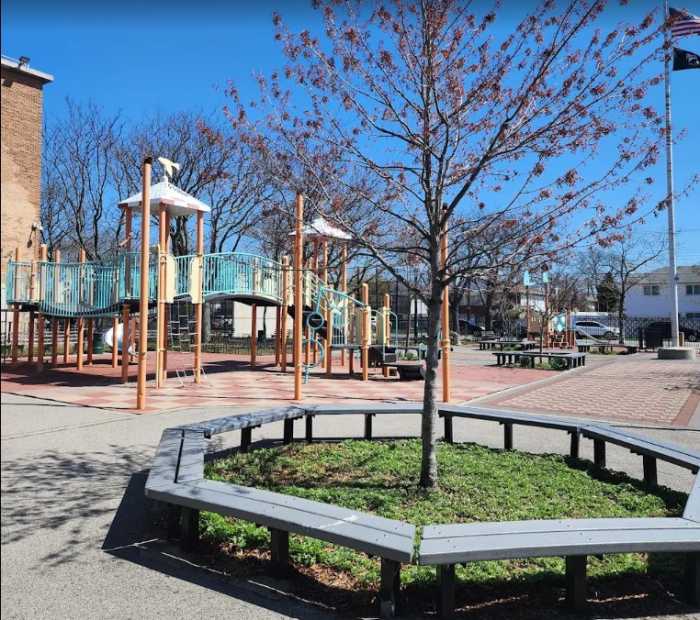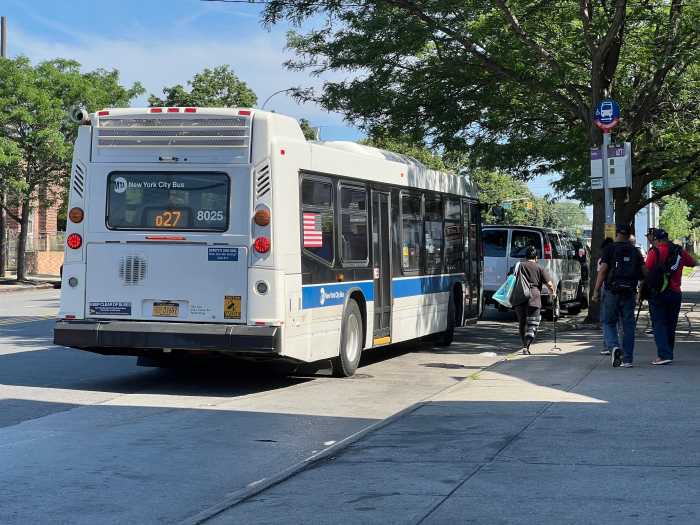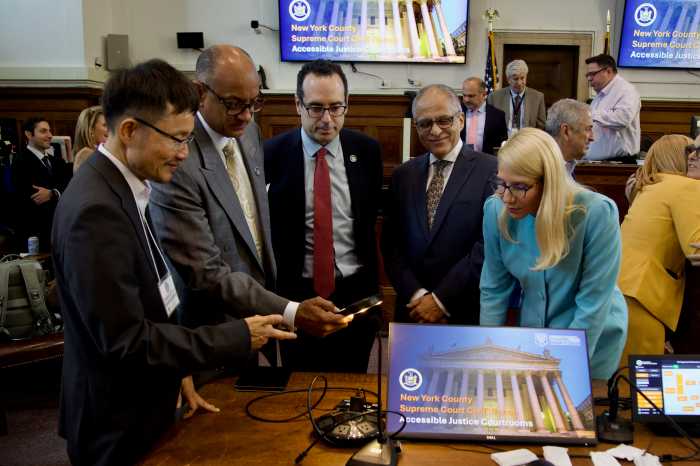By Joe Maniscalco By Helen Klein
What is the condition of the Manhattan Beach seawall now that a partial collapse has knocked the venerable old Ocean Avenue footbridge out of commission? The city’s Economic Development Corporation (EDC) – the lead agency presently conducting site investigations – won’t know for sure until the results from tests now being conducted come in. Those results are expected in about a week’s time, according to EDC. The agency says it is now trying to obtain permits from the state’s Department of Environmental Conservation, federal Army Corps of Engineers, City Planning, Department of State and the city’s Department of Small Business Services which will allow their work to proceed. While test results are still pending, the EDC does suspect that a sink hole may have opened up around Ocean Avenue, causing the sidewalk and the ramp up to the footbridge to collapse. Emergency response crews in small boats have been traveling up and down the seawall visually inspecting the bulkhead, while other inspectors using seismographic equipment have been checking for potential weaknesses in the sidewalk. The Parks Department has already isolated a couple of spots along the promenade which have sunk noticeably. Janel Patterson, EDC spokesperson, said that inspectors would immediately alert the city if any potential new dangers were uncovered. “And that has not happened,” she said. This is not the first time the failure of the seawall has led parts of Shore Boulevard to collapse. It happened back in September 1973. The collapse – this time around Langham Street – was blamed on seawater seeping through the bulkhead causing the ground to shift. Damage done to the bulkhead around Ocean Avenue earlier this month can still clearly be seen from the temporary bridge constructed about 200 feet from the partially dismantled footbridge. Community Board 15 District Manager Ben Akselrod, a critic of the city’s initial response to the emergency, anticipates a progress report on repair efforts at a meeting with EDC officials later this week. “I have no doubt about the EDC’s capabilities in being able to complete this job,” he said. “But we want to make sure that they continue to inspect the seawall.” As reported earlier, it is not exactly clear when the south side of the Sheepshead Bay seawall was last inspected. The area was scheduled to be investigated some time this summer, but the collapse occurred before that could happen. The north side of the seawall was last inspected in February 2004. The city moved quickly in constructing a temporary bridge fashioned out of linking barges after the footbridge was shut down, but questions about its safety have been raised. “While it was gratifying to see a temporary pedestrian bridge put in place until permanent repairs are made, I question the decision to fashion the bridge out of metal,” State Senator Carl Kruger wrote in a letter to EDC President Andrew Alper. “Since parts of the bridge sit in the water, the bridge appears to be an excellent conductor of electricity – and a threat to pedestrians during lighting storms.” The EDC did temporarily shut down the bridge shortly after opening it because of a violent spring storm. Patterson said the EDC would continue to close the bridge during lighting storms until engineers can determine if additional safety precautions need to be taken. “If the design needs to be modified, it is clearly a matter of urgency,” said Kruger. For the first time, a comprehensive catalog of all tax-exempt property owned by institutions in Bay Ridge, Dyker Heights, Bensonhurst and Gravesend has been assembled. The list of properties –many of which potentially could be developed in excess of their current state — was put together by a task force on over-development created by Congressperson Vito Fossella. Fossella came up with the idea of the task force after the community was rocked by news that the congregation of the Bay Ridge Methodist Church was considering selling the venerable structure to a developer. Because of underlying zoning, the Methodist Church, which occupies a large chunk of land at Fourth and Ovington Avenues, could be replaced by a multi-family residential structure, as tall as 75 feet. Estimates of the value of the property are in the $10 to $15 million range. According to Fossella, a total of 75 pieces of institutional property on 297 acres was identified in the Community Board 10 area. In Community Board 11, the task force identified 66 pieces of property on 64 acres that met the criteria. The majority of these are properties owned by religious institutions, either for worship or for use as schools. It is the underlying zoning, and the potential for over-development in communities that have been besieged by developers who have torn down modest buildings to build multi-family homes and community facilities, that has fueled concern over the future of these properties. “We can now proceed with developing strategies for each site to control over-development and protect our community,” noted Fossella. “The sale and potential development of large parcels of land owned by local institutions will be the next battle in the fight to control over-development.” The goal of the task force, he added, is to, “Develop a comprehensive game plan for our community before a piece of institutionally-owned property is even on the market. “We plan to stay ahead of the curve,” stressed Fossella, who pointed out that the group that assembled the catalog would now be broken down into subcommittees that would tackle various parts of the problem. One subcommittee would be devoted to the issue of the Bay Ridge Methodist Church, whose uncertain future brought the situation to the forefront earlier this year. Another will focus on at-risk properties, the so-called “soft sites.” Craig Eaton, the chairperson of the task force and the chairperson of CB 10, agreed. He said that, with the catalog complete, “The next step is going to be dividing the properties up among the task force members, to find information about them: What kind of property they are, what they are zoned as, what they are being used for. Then we can look at, is there any potential area for problems? Is there potential for any of them to cease operations? If so, we will know at an earlier stage and can be more proactive, rather than reactive. We are going to roll up our sleeves and start looking at these properties on an individual basis.” The next deadline for the task force is the preparation of a report, said Fossella. The report is scheduled to be completed in September. “We want to start getting people sensitized on this,” noted Fossella. “It’s an important issue in the community.” The issue is not a new one. Back in 2003, Stephen Harrison, who was then the chairperson of CB 10, warned that church consolidations – occurring because of congregations starved for both parishioners and funds – could pose a significant over-development threat, particularly where the piece of property was sizeable. The board later worked the issue into The Case for Preservation Zoning, its recommendations for preserving the scale of the community, noting, that the area’s religious campuses, “Are vulnerable to over-development as churches consolidate programs and some close under the pressure of changing population trends.”




































